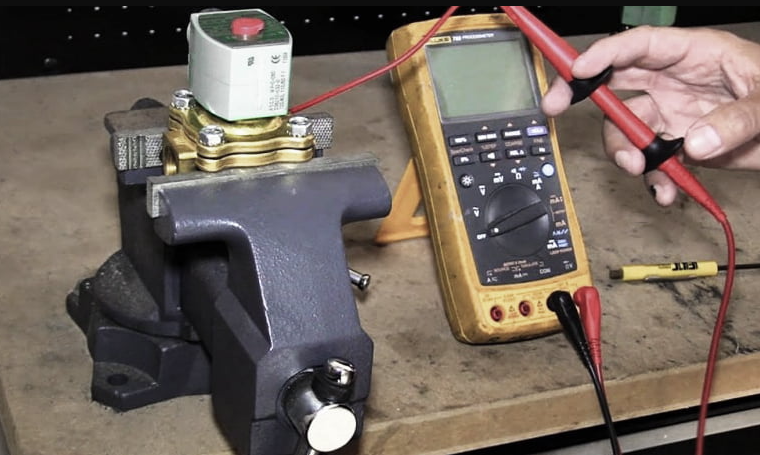Ultimate Guide to Understanding Vacuum Solenoid

A vacuum solenoid is an essential component in many industrial systems, controlling the flow of air or gas to enable precise automation and operation. From factory lifting systems to pneumatic machinery, vacuum solenoids ensure efficiency, safety, and reliability in various applications. In this article, we’ll explore what a vacuum solenoid is, how it works, and its key applications across modern industries.
What Is a Vacuum Solenoid?
A vacuum solenoid valve is an electromechanical device that controls the flow of air or gas in a vacuum system. It uses an electromagnetic coil to move a plunger, which opens or closes the valve to regulate airflow. In vacuum lifting systems, these valves are essential for controlling suction and release, allowing precise handling of materials.
Key Components of a Vacuum Solenoid Valve
- Coil: Creates a magnetic field when powered, which moves the plunger.
- Plunger (Armature): Moves to open or close the valve when the coil is energized.
- Spring: Pushes the plunger back to its default position when the coil is off.
- Valve Body: Holds all the components and connects to the vacuum system.
- Seals: Keep the system airtight and prevent leaks.
- Ports: Allow air or gas to enter and exit the system.
Understanding the components and function of a vacuum solenoid valve is important for making vacuum systems reliable and efficient, especially when precise control is needed.
How Vacuum Solenoids Work
A vacuum solenoid valve is a device that controls the flow of air or gas in a vacuum system. It uses an electromagnetic coil to move a plunger, which opens or closes the valve to regulate airflow. In vacuum lifting systems, these valves are essential for controlling suction and release, ensuring materials are handled precisely.
- Activation: Energizing the Coil
When an electrical signal powers the solenoid coil, it creates a magnetic field. This pulls the plunger, moving the valve to either open or close it, which allows or blocks airflow to the vacuum system.
- Valve Operation: Normally Open (NO) vs. Normally Closed (NC)
Depending on the design, the valve can be normally open (NO) or normally closed (NC).
- Normally Open (NO): The valve is open when not powered, allowing air to flow. When powered, the valve closes and stops airflow.
- Normally Closed (NC): The valve is closed when not powered, blocking airflow. When powered, it opens, letting air flow.
- Maintaining Vacuum: Regulating Airflow
The valve controls the airflow to maintain the vacuum at the right pressure. In lifting systems, this keeps objects held securely. Precise control ensures the vacuum stays at the desired level for safe and efficient operation.
- Release: De-Energizing the Valve
When power is turned off, the magnetic field disappears, and the plunger returns to its default position. This stops airflow, releases the vacuum, and allows the object to be safely released.
Understanding how vacuum solenoid valves work is key to designing and maintaining vacuum systems, especially when precise suction and release control is needed.
See also: How to Update Your Smartwatch’s Operating System?
Types of Vacuum Solenoid Valves
Vacuum solenoid valves are important for controlling airflow in systems like vacuum lifters, pneumatic automation, and industrial processes. Different types are suited for various needs:
- Direct-Acting Solenoid Valves
Direct-acting valves use the electromagnetic force from the coil to directly move the valve plunger, opening or closing the valve seat. This allows for immediate response and is ideal for low-pressure, low-flow applications.
Key Features
- Does not require external system pressure to operate.
- Suitable for small orifice sizes and low-pressure applications.
- Simple design with fewer moving parts.
Applications
- Small vacuum lines in laboratory equipment.
- Small-scale pneumatic systems.
- Pilot-Operated Solenoid Valves
Pilot-operated valves use a small pilot valve, actuated by the coil, to control the main valve. This design handles higher pressures and larger flow rates while using less energy.
Key Features:
- Requires system pressure to operate.
- Handles high-pressure, high-flow applications.
- More energy-efficient than direct-acting valves.
Applications:
- Large industrial systems.
- Pneumatic actuators and heavy-duty vacuum systems.
- Three-Way Solenoid Valves
Three-way valves have three ports and can switch airflow paths. They allow switching between vacuum and atmospheric pressure.
Key Features:
- Controls airflow direction.
- Can be configured as normally open (NO) or normally closed (NC).
- Essential for applications requiring alternating vacuum and atmosphere.
Applications:
- Vacuum lifting devices for holding and releasing objects.
- Systems that switch between multiple vacuum sources.
Understanding these valve types helps you choose the right one for your application, ensuring your vacuum system works efficiently and reliably.
Key Considerations When Choosing a Vacuum Solenoid
When picking a vacuum solenoid valve, it’s important to consider several factors to ensure it works well with your system:
- Vacuum System Specifications
- Vacuum Level: Choose a valve that can handle the required vacuum.
- Flow Rate: Ensure the valve can handle the volume of air or gas your system needs.
- Pressure and Temperature: Select a valve that can withstand your system’s operating pressure and temperature.
- Valve Type
- Direct-Acting Valves: Best for systems with low pressure and low flow. They operate quickly and provide fast response times.
- Pilot-Operated Valves: Ideal for high-pressure, high-flow systems. They handle larger volumes efficiently and use less energy.
- Three-Way Valves: Can switch between vacuum and atmospheric pressure, making them ideal for precise control in applications such as vacuum lifting and release.
- Materials
- Valve Body: Common options are stainless steel, aluminum, or brass. Stainless steel is ideal for high-vacuum systems because it resists corrosion and has low outgassing.
- Seals and Diaphragms: Materials like FKM, EPDM, or silicone are used. For ultra-high vacuum, choose materials with very low outgassing.
- Electrical Specifications
- Voltage and Current: Ensure the valve matches your system’s power supply.
- Duty Cycle: Check how often the valve can operate to match your application.
- Connector Type: Make sure the connector fits your system.
- Versatility and Durability
- Adaptability: Select a valve that works under different operating conditions and suits your system’s needs.
- Resistance to Harsh Conditions: Choose materials and designs that can handle chemicals, high temperatures, and other challenging environments.
By considering these factors, you can select a vacuum solenoid valve that is reliable, efficient, and perfectly suited for your application.
Benefits of Using Vacuum Solenoids
Vacuum solenoid valves play a vital role in modern industrial automation by enhancing efficiency, accuracy, and safety. Their main benefits include:
- Precise Control of Suction and Airflow
These valves provide accurate regulation of vacuum levels, ensuring automated systems operate smoothly. Their fast response times allow quick adjustments, which is essential for tasks like material handling and packaging. This precision reduces errors and improves overall process quality.
- Automation of Repetitive Tasks
Vacuum solenoid valves enable automation of tasks such as lifting, placing, and sorting components. This minimizes the need for manual labor, allowing systems to run continuously with greater reliability.
- Enhanced Efficiency, Safety, and Reliability
These valves control suction quickly and accurately, helping machines work faster and handle objects more smoothly in automated systems. Their strong, durable design ensures they perform reliably even in tough industrial environments, while also reducing maintenance and downtime.
- Reduced Manual Labor and Production Errors
Using vacuum solenoid valves for automation decreases the need for human labor, which helps reduce mistakes and ensures more consistent production. This not only makes workplaces safer but also leads to more reliable and predictable manufacturing results.
Integrating vacuum solenoid valves into industrial systems improves efficiency, reliability, safety, and overall cost-effectiveness, making them essential for modern automation.




